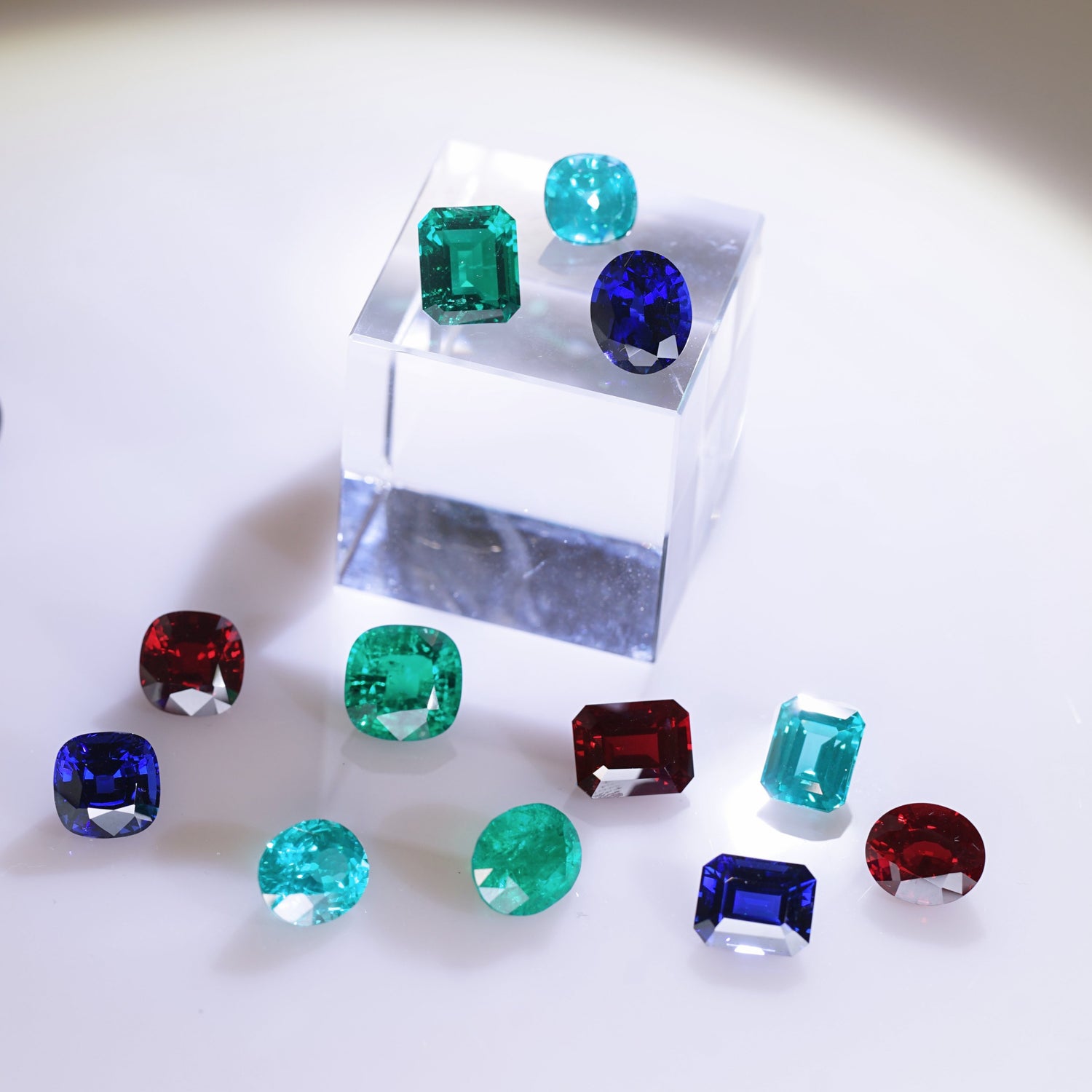
Lab Grown Gemstones FAQs
Collapsible content
What is a lab grown gemstone?
Formation of lab grown gemstones
In laboratories, various advanced technologies are used to cultivate gemstones that share the same physical and chemical properties as natural ones. Here are three commonly used methods:
🔥 Flame Fusion (Verneuil Method)
The Flame Fusion method is the earliest and still one of the most widely used techniques for creating synthetic gemstones. It involves melting powdered gemstone material using a high-temperature flame, which then drips onto a seed crystal or platform and cools quickly to form a crystal. This is the most common method used in the market. (Diamond Culture does not use gemstones produced by this method.)
Pros: Fast production, low cost, ideal for mass-producing rubies and sapphires.
Cons: Resulting crystals often contain curved color bands, gas bubbles, and other synthetic marks, giving a more artificial look that is easier to detect.
🌡 Hydrothermal Method
This method simulates the natural formation process of gemstones deep within the Earth's crust. Raw gemstone materials and solvents are sealed in a high-pressure autoclave, where high temperature and pressure conditions allow crystals to form gradually.
How it works: The autoclave is divided into two zones. The bottom (hot zone) dissolves the raw materials, which then flow to the upper (cooler) zone where the crystal slowly precipitates and grows on the seed crystal.
Application: Mainly used for growing emeralds, quartz, and other stones that are difficult to produce with other methods.
Features: The process takes several weeks to months; the resulting crystals are high in quality and closely resemble natural gemstones.
🧊 Czochralski Method
The Czochralski method is a highly precise crystal growth technique often used in industrial optics and high-quality gemstone production.
How it works: A small seed crystal rod is vertically dipped into molten gemstone material. As it is slowly rotated and pulled upward, the crystal grows steadily along the seed's structure.
Features: Produces high-quality crystals with stable structures and excellent clarity — ideal for premium gemstones and advanced technological components.
What are the differences between lab grown gemstones and natural gemstones?
Formation Process
Lab-grown gemstones have the same chemical composition and physical characteristics as natural gemstones, but are created in controlled laboratory environments by replicating the conditions under which natural gems form. In contrast, natural gemstones develop over millions of years deep within the Earth.
Rarity
While high-quality lab-grown gemstones require advanced production techniques, they can be sustainably produced. Natural gemstones, on the other hand, were formed millions of years ago and are therefore much rarer. This difference in rarity is one of the main reasons lab-grown gems are more affordable than natural ones of similar size and quality.
Internal Characteristics
Lab-grown gemstones contain different trace elements, inclusions, and distinct growth patterns compared to natural gems. These features do not affect the appearance of the gemstone but do allow gemological laboratories to distinguish between the two types.
How can consumers distinguish between lab grown gemstones and natural gemstones?
Lab-grown gemstones share the same physical, chemical, and visual properties as natural gemstones — they are genuine gemstones. Even experienced jewelers are generally unable to distinguish between the two types with the naked eye.
As a result, accurate identification requires specialized high-tech instruments used by professional gemological laboratories, making IGI certification an important assurance. It’s worth noting that due to the delicate nature of gemstone materials, engraving poses a risk of damage. Therefore, according to industry standards, neither natural nor lab-grown gemstones have laser inscription on the girdle.
